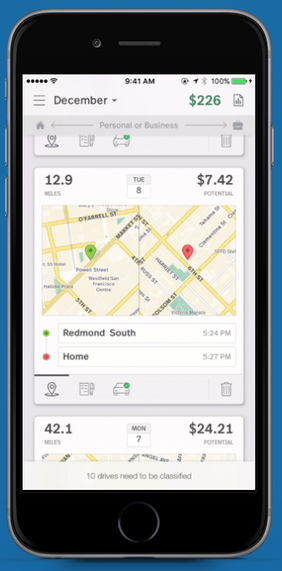Does that sound too good to be true? Well, what if I told you that you could drive a Lamborghini for less than it costs to lease a Honda Accord?
I was skeptical, but it turns out that both scenarios are completely possible, according to Pejman Ghadimi, founder of Exotic Car Hacks.
I first came across Mr. Ghadimi when I read his book, The Third Circle Theory. It’s an awesome book about entrepreneurship that has sold over 150,000 copies since 2013, making it one of the most successful self-published books of all time.
Because I was fascinated by his book, I did a little more research. I Googled “Pejman Ghadimi” and found Exotic Car Hacks, an educational platform that is designed to help people get into exotic cars without the oft-misconceived high costs.
Pejman has used the precise method he teaches in his courses to buy and sell over sixty personal luxury and exotic cars. He’s been involved in the automotive industry for years, working with wholesalers, brokers, dealers, etc. It’s safe to say that there is no one better to teach you how to do this. He even guarantees it. If end up getting the course and not liking it, he offers a 14-day money-back guarantee, which is nice. I’ve always believed that if you can’t guarantee your product or service, you shouldn’t offer it. I was definitely intrigued, but I wasn’t sure if paying $97 for the basic membership was worth it. It was his guarantee that pushed me over the edge.
I came across some of Exotic Car Hacks YouTube videos and watched a few. Here’s one that definitely got my attention….

How Does It Work?
One of the biggest things to understand with exotic cars is that their depreciation curve is different from normal cars. A “normal” car, like a Honda Civic or Toyota Camry will start off at market value and depreciate all the way down to zero. If you buy a brand new Honda Civic for $20,000, you will lose a nice chunk of change the minute you drive off the lot. It will continue to depreciate over the years because millions of Honda Civics are produced and when demand is for newer cars, the price of the older cars plummets.
I don’t want to give too much detail away (you have to buy the course for that), but when it comes to exotic cars, their depreciation curve is a little different. They still depreciate, but they don’t go all the way to zero. They tend to level off at around 30% of their value. For example, a brand new Lamborghini LP550 would’ve cost you about 230,000. After one year, that same car would be worth around $145,000.
You would’ve lost nearly $100,000 in one year because of depreciation. That’s a sucker’s move in my book. However, exotic car depreciation eventually hits a threshold. The idea is that around year four or five, the price of the Lamborghini will level off, and that’s when you want to strike.
How to Get a Good Deal
Car dealerships are in business to move inventory. If they aren’t moving cars in three months or less, they start feeling the pressure. The cool thing is that you can use this to your advantage. The dealership has to get the car off the lot as quickly as possible to maximize profit, but you don’t. You can buy the car at a discount and put it on the market immediately for a quick flip or hold out for a better price, enjoying your new vehicle all along.
The Exotic Car Hacks course is one of the best “insider” courses I’ve ever taken because it shows you exactly how to negotiate with car dealerships and the tactics they use to extract the most money out of you. That ALONE is worth the $97 to me. I know that my improved negotiating power will save me way more than $97 on my next car purchase.
- The dealership doesn’t make its money selling cars. You might be surprised to learn this, but car dealerships don’t make that much money selling cars. They actually make the bulk of their money in the finance department. They typically have a 1% markup on any financing you get, and they make an obscene amount of money selling you products like GAP insurance, service contracts, etc.
- Demonstrate a sense of urgency and tell them that you’re shopping. You might think that demonstrating urgency is a bad thing, but you want the dealership to know that you’re a serious buyer. A lot of times people who “lowball” aren’t taken seriously. If you tell them that you’ve been looking at other cars and you want to come to an agreement, they will be more willing to cut you a deal. The worst thing for a dealership is to have you leave the lot. The minute you leave, the chance of them selling to you drastically decrease.
- Don’t fall for any of the dealer B.S. Car salespeople will do whatever it takes to sell you a car. I don’t blame them – it’s their job. They’ll use pressure by telling you another buyer is coming later. They’ll use emotional pressure by saying things like, “If I sell you the car at that low of a price, I won’t be able to feed my kids.” Get real! Don’t fall for the crap.
- Blame a third party (that’s absent) for a spending limit. If you are negotiating price and the dealer refuses to come down more, blame an absent third party. Let’s say you are at $95K and the dealer is at $105K. You would be willing to make a deal at $100K, but the dealer is refusing to budge. Tell the dealer something like: “Okay, I’ve got to come clean. My wife would KILL me if I bought at $105K because she actually set a spending limit of $100K. I’ve got to walk – thank you for your time.” As you get up to walk away, the dealer should come down.

If you don’t have great credit, the course also shows you exactly how to significantly boost your credit in 90 days. You can do it fast and you can do it without wasting time and money. As a personal finance blogger, I didn’t learn anything new in that section, but it’s good to include for the average person.
I finished the course in four days (I did one video segment per day) and feel more empowered than ever to get an exotic car. I’ve got my sights set on a Porsche 911.
If you want to take the course, I highly recommend it. It’s guaranteed for 14 days anyway, so if you think it sucks, just get your money back. You can get it here.
What luxury or exotic car would you like to drive? Let me know in the comments below!


























